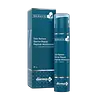What's inside
What's inside
 Key Ingredients
Key Ingredients

 Benefits
Benefits

 Concerns
Concerns

 Ingredients Side-by-side
Ingredients Side-by-side

Water
Skin ConditioningPropanediol
SolventCoco-Caprylate/Caprate
EmollientCetearyl Alcohol
EmollientNiacinamide
SmoothingBetaine
HumectantCyclopentasiloxane
EmollientNeopentyl Glycol Diheptanoate
EmollientIsododecane
EmollientSqualane
Emollient3-O-Ethyl Ascorbic Acid
Skin ConditioningCeramide NP
Skin ConditioningPEG-7 Glyceryl Cocoate
EmulsifyingPhenoxyethanol
PreservativeEthylhexylglycerin
Skin ConditioningGlyceryl Stearate
EmollientPalmitoyl Tripeptide-5
Skin ConditioningPolyacrylate-13
Polyisobutene
Polysorbate 20
EmulsifyingGlyceryl Stearate Citrate
EmollientCentella Asiatica Extract
CleansingXylitylglucoside
HumectantAnhydroxylitol
HumectantXylitol
HumectantSodium Hyaluronate
HumectantAllantoin
Skin ConditioningAcrylates/C10-30 Alkyl Acrylate Crosspolymer
Emulsion StabilisingTriethanolamine
BufferingSodium Gluconate
Skin ConditioningWater, Propanediol, Coco-Caprylate/Caprate, Cetearyl Alcohol, Niacinamide, Betaine, Cyclopentasiloxane, Neopentyl Glycol Diheptanoate, Isododecane, Squalane, 3-O-Ethyl Ascorbic Acid, Ceramide NP, PEG-7 Glyceryl Cocoate, Phenoxyethanol, Ethylhexylglycerin, Glyceryl Stearate, Palmitoyl Tripeptide-5, Polyacrylate-13, Polyisobutene, Polysorbate 20, Glyceryl Stearate Citrate, Centella Asiatica Extract, Xylitylglucoside, Anhydroxylitol, Xylitol, Sodium Hyaluronate, Allantoin, Acrylates/C10-30 Alkyl Acrylate Crosspolymer, Triethanolamine, Sodium Gluconate
Water
Skin ConditioningButyrospermum Parkii Butter
Skin ConditioningCaprylic/Capric Triglyceride
MaskingCentella Asiatica Extract
CleansingIsopropyl Myristate
EmollientCetearyl Alcohol
EmollientGlyceryl Stearate
EmollientBisabolol
MaskingArginine
MaskingStearic Acid
CleansingCeramide NP
Skin ConditioningCeramide AP
Skin ConditioningPhytosphingosine
Skin ConditioningCholesterol
EmollientGlycine Soja Hull
AbrasiveCeramide EOP
Skin ConditioningPropylene Glycol
HumectantSodium Polyacrylate
AbsorbentTriethanolamine
BufferingSodium Gluconate
Skin ConditioningPhenoxyethanol
PreservativeEthylhexylglycerin
Skin ConditioningXanthan Gum
EmulsifyingCarbomer
Emulsion StabilisingSodium Lauroyl Lactylate
EmulsifyingSodium Benzoate
MaskingWater, Butyrospermum Parkii Butter, Caprylic/Capric Triglyceride, Centella Asiatica Extract, Isopropyl Myristate, Cetearyl Alcohol, Glyceryl Stearate, Bisabolol, Arginine, Stearic Acid, Ceramide NP, Ceramide AP, Phytosphingosine, Cholesterol, Glycine Soja Hull, Ceramide EOP, Propylene Glycol, Sodium Polyacrylate, Triethanolamine, Sodium Gluconate, Phenoxyethanol, Ethylhexylglycerin, Xanthan Gum, Carbomer, Sodium Lauroyl Lactylate, Sodium Benzoate
Ingredients Explained
These ingredients are found in both products.
Ingredients higher up in an ingredient list are typically present in a larger amount.
Centella Asiatica Extract (Centella) is derived from an herb native to Southeast Asia. It is famous for its anti-inflammatory and soothing properties.
Centella is rich in antioxidants and amino acids, such as Madecassic Acid and Asiaticoside.
Studies show the compounds in centella help with:
The combination of all these properties makes centella effective at soothing, hydrating, and protecting the skin.
Other great components of centella include Vitamin A, vitamin C, several B vitamins, and Asiatic Acid.
Fun fact: Centella has been used as a medicine and in food for many centuries. As a medicine, it is used to treat burns, scratches, and wounds.
Learn more about Centella Asiatica ExtractCeramide NP is a type of ceramide and formally known as ceramide 3.
Ceramides are intercellular lipids naturally found in our skin that bonds dead skin cells together to create a barrier. They are known for their ability to hold water and thus are a great ingredient for dry skin.
Ceramides are an important building block for our skin barrier. A stronger barrier helps the skin look more firm and hydrated. By bolstering the skin ceramides act as a barrier against irritating ingredients. This can help with inflammation as well.
If you would like to eat ceramides, sweet potatoes contain a small amount.
Read more about other common types of ceramides here:
Ceramide AP
Ceramide EOP
Cetearyl alcohol is a mixture of two fatty alcohols: cetyl alcohol and stearyl alcohol. It is mainly used as an emulsifier. Emulsifiers help prevent the separation of oils and products. Due to its composition, it can also be used to thicken a product or help create foam.
Cetearyl alcohol is an emollient. Emollients help soothe and hydrate the skin by trapping moisture.
Studies show Cetearyl alcohol is non-toxic and non-irritating. The FDA allows products labeled "alcohol-free" to have fatty alcohols.
This ingredient is usually derived from plant oils such as palm, vegetable, or coconut oils. There is debate on whether this ingredient will cause acne.
Due to the fatty acid base, this ingredient may not be Malassezia folliculitis safe.
Learn more about Cetearyl AlcoholEthylhexylglycerin (we can't pronounce this either) is commonly used as a preservative and skin softener. It is derived from glyceryl.
You might see Ethylhexylglycerin often paired with other preservatives such as phenoxyethanol. Ethylhexylglycerin has been found to increase the effectiveness of these other preservatives.
Glyceryl Stearate is a mix of glycerin and stearic acid.
It is used to stabilize the mixing of water and oil ingredients. By preventing these ingredients from separating, it can help elongate shelf life. It can also help thicken the product's texture.
As an emollient, it helps soften skin and supports barrier-replenishing ingredients.
In cosmetics, Glyceryl Stearate is often made from vegetable oils or synthetically produced.
This ingredient may not be fungal-acne safe
Fun fact: The human body also creates Glyceryl Stearate naturally.
Learn more about Glyceryl StearatePhenoxyethanol is a preservative that has germicide, antimicrobial, and aromatic properties. Studies show that phenoxyethanol can prevent microbial growth. By itself, it has a scent that is similar to that of a rose.
It's often used in formulations along with Caprylyl Glycol to preserve the shelf life of products.
This is the synthetic salt of gluconic acid, a form of PHA and mild exfoliant.
It is mainly used to stabilize oil and butter formulations from going bad. Sodium gluconate is a humectant, pH regulator, and chelating agent.
Chelating agents help neutralize unwanted metals from affecting the formulation.
Sodium gluconate is water-soluble.
Learn more about Sodium GluconateTriethanolamine is an emulsifier and pH adjuster. It is created using ethylene oxide and ammonia. This gives Triethanolamine a nitrogen core and a similar scent to ammonia.
As an emulsifier, it prevents ingredients from separating and enhances texture by adding volume to a product.
PH adjusters are common in cosmetic products. The pH of a product can affect the effectiveness of other ingredients. A product with a high pH may also irritate the skin.
Learn more about TriethanolamineWater. It's the most common cosmetic ingredient of all. You'll usually see it at the top of ingredient lists, meaning that it makes up the largest part of the product.
So why is it so popular? Water most often acts as a solvent - this means that it helps dissolve other ingredients into the formulation.
You'll also recognize water as that liquid we all need to stay alive. If you see this, drink a glass of water. Stay hydrated!
Learn more about Water